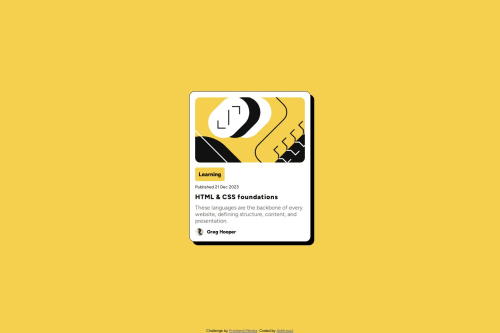
Solution retrospective
What are you most proud of, and what would you do differently next time?
I would slightly say that I improved the way how I style the components and declaring the elements with var function. Also the layouting for the design, I would say that I improved it.
What challenges did you encounter, and how did you overcome them?Nothing, I handled properly the challenge
What specific areas of your project would you like help with?Nothing, I handled properly the challenge
Code
Loading...
Please log in to post a comment
Log in with GitHubCommunity feedback
No feedback yet. Be the first to give feedback on Keiru Dev's solution.
Join our Discord community
Join thousands of Frontend Mentor community members taking the challenges, sharing resources, helping each other, and chatting about all things front-end!
Join our Discord